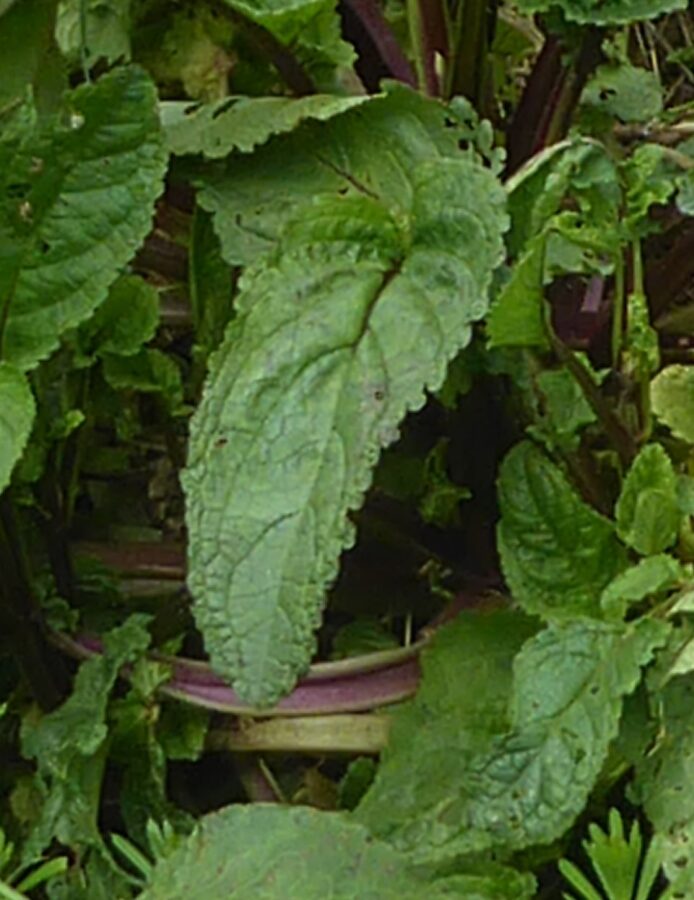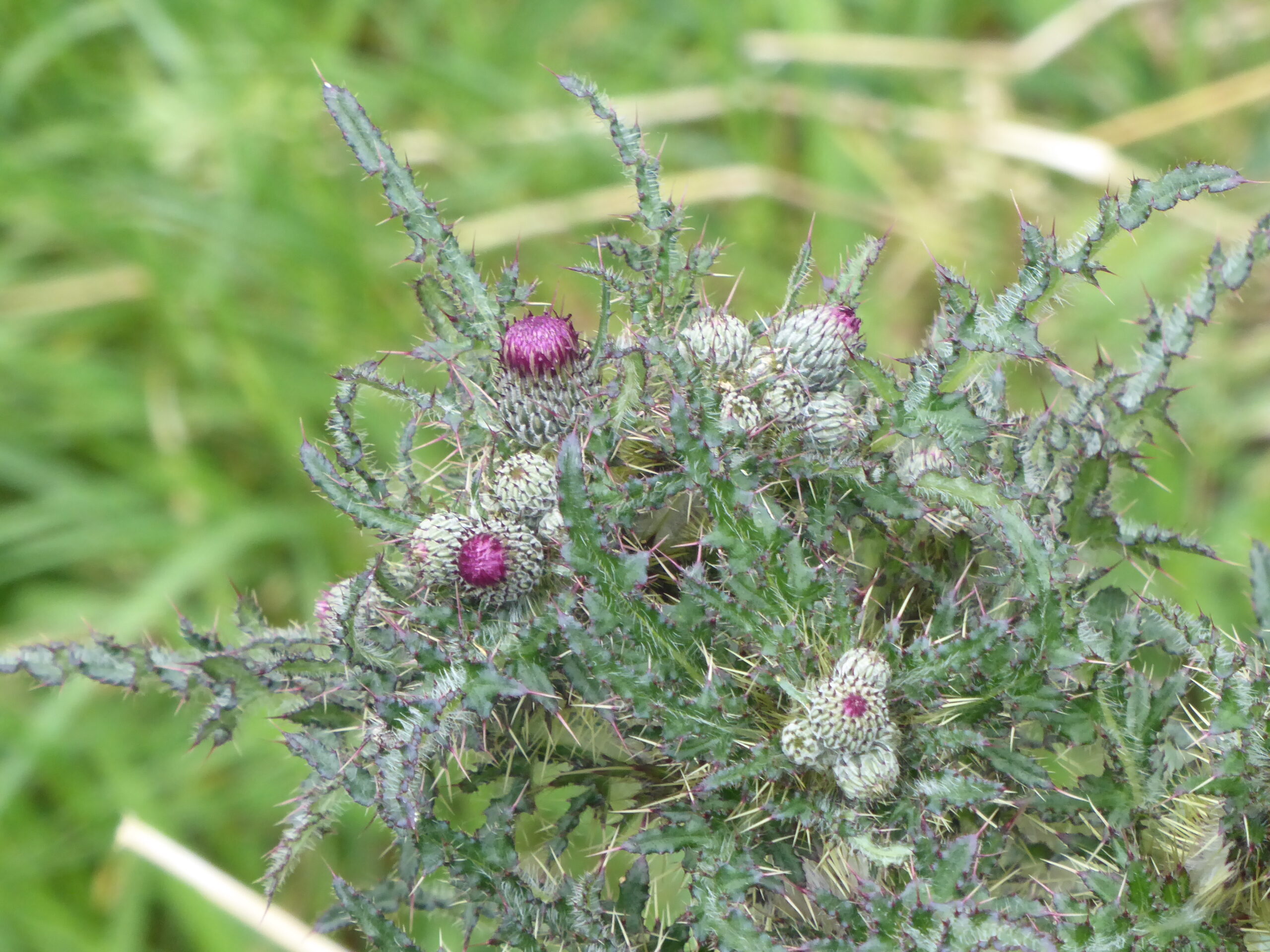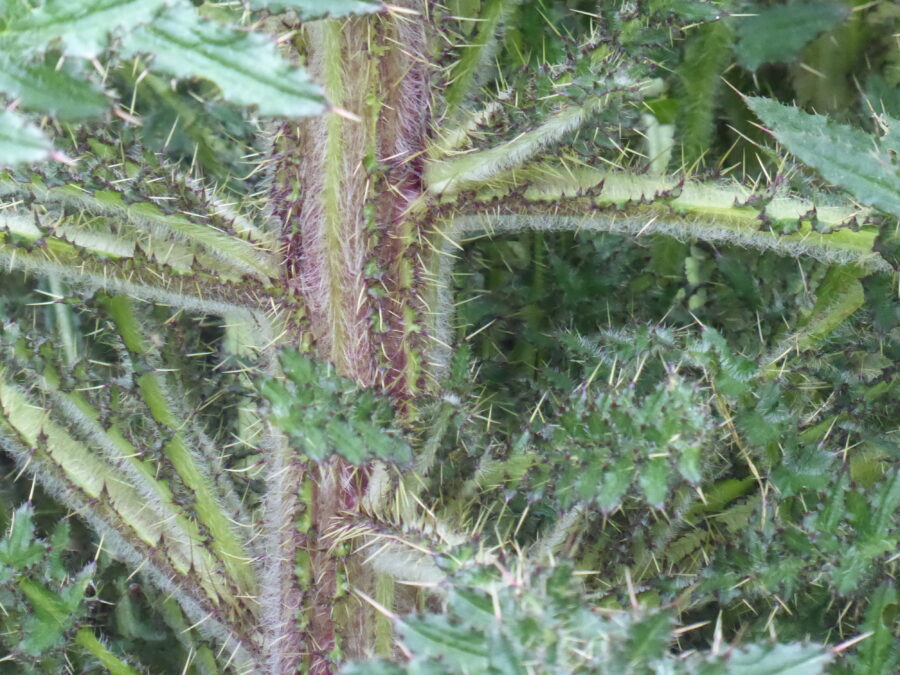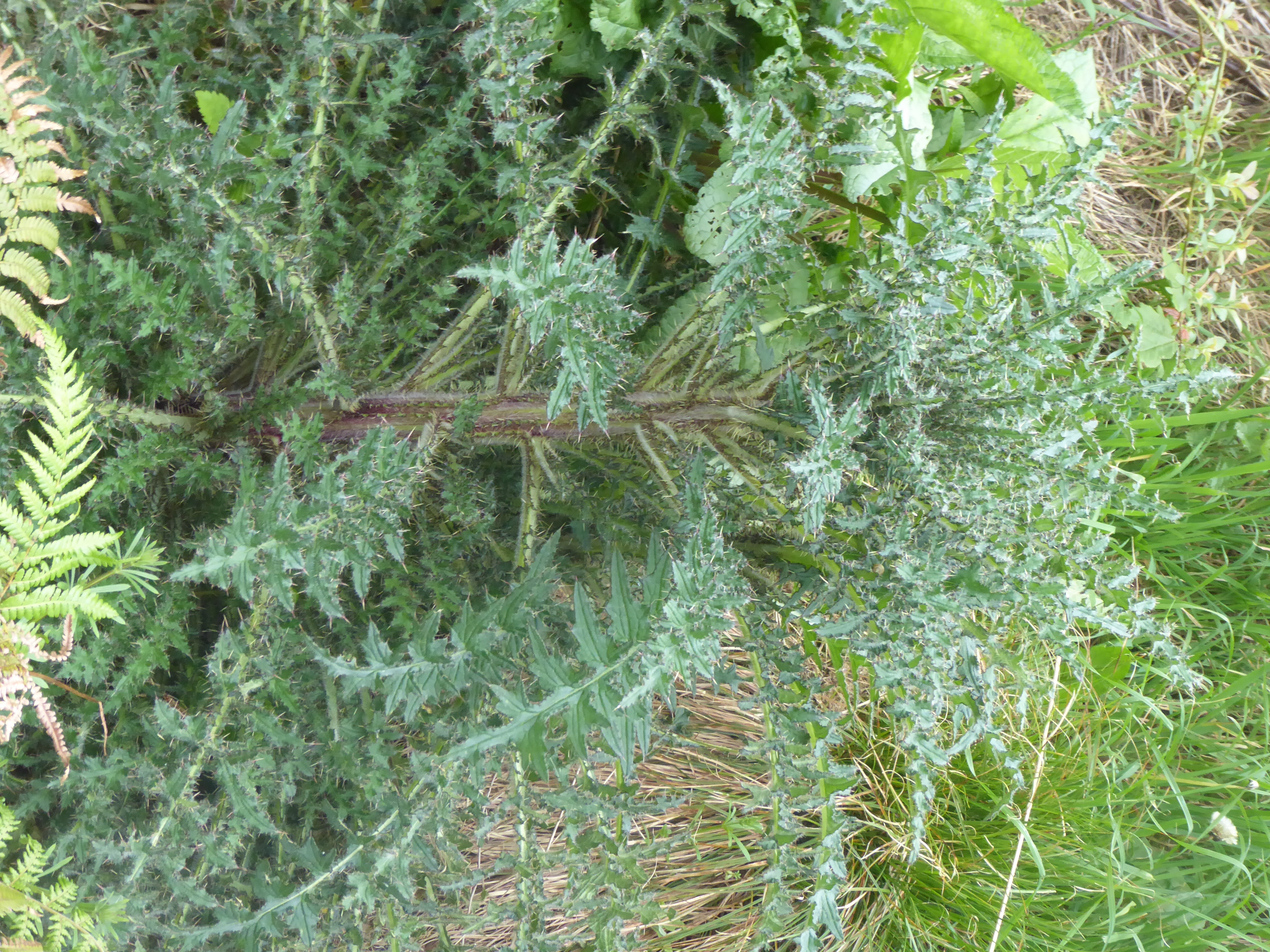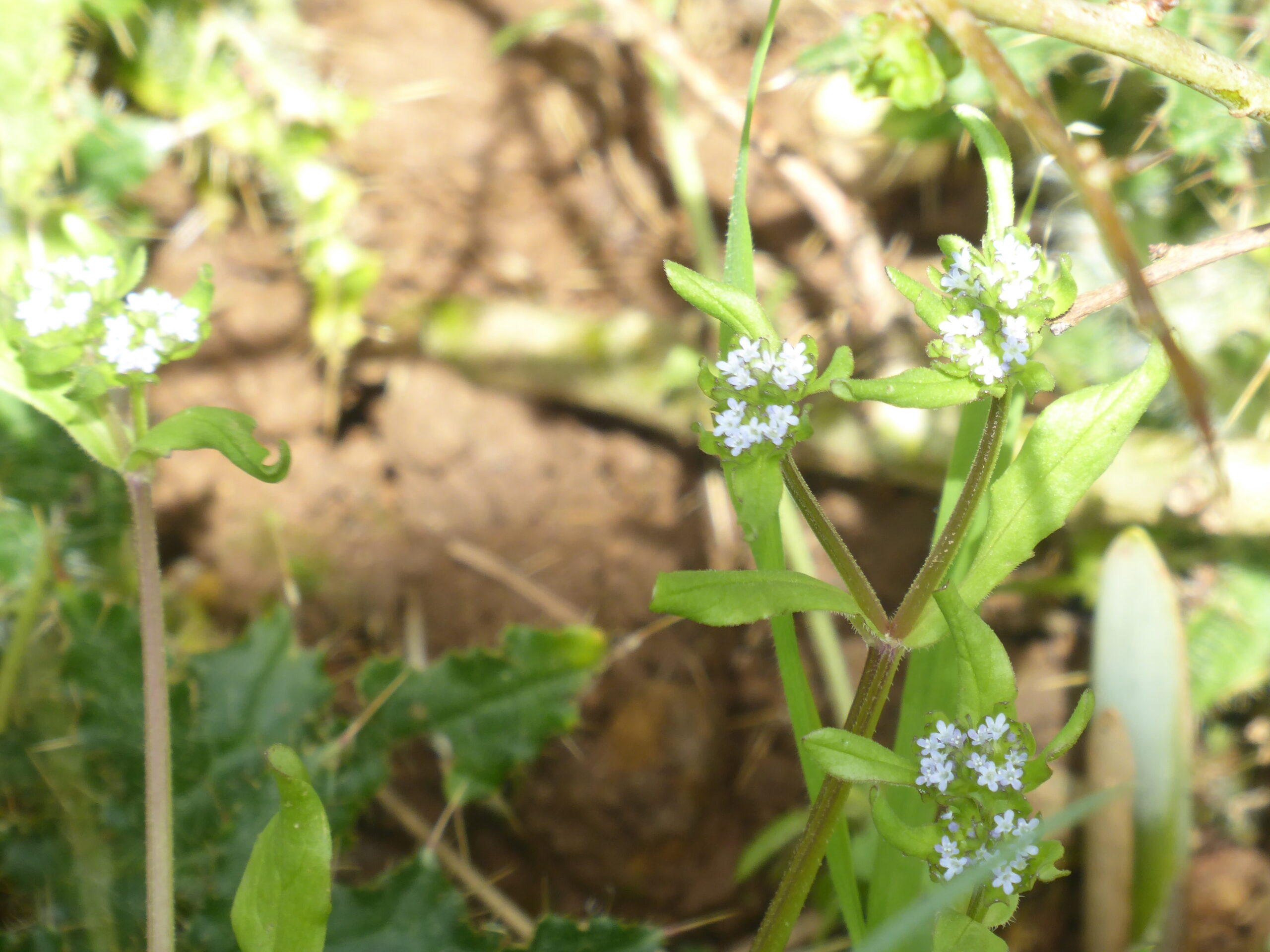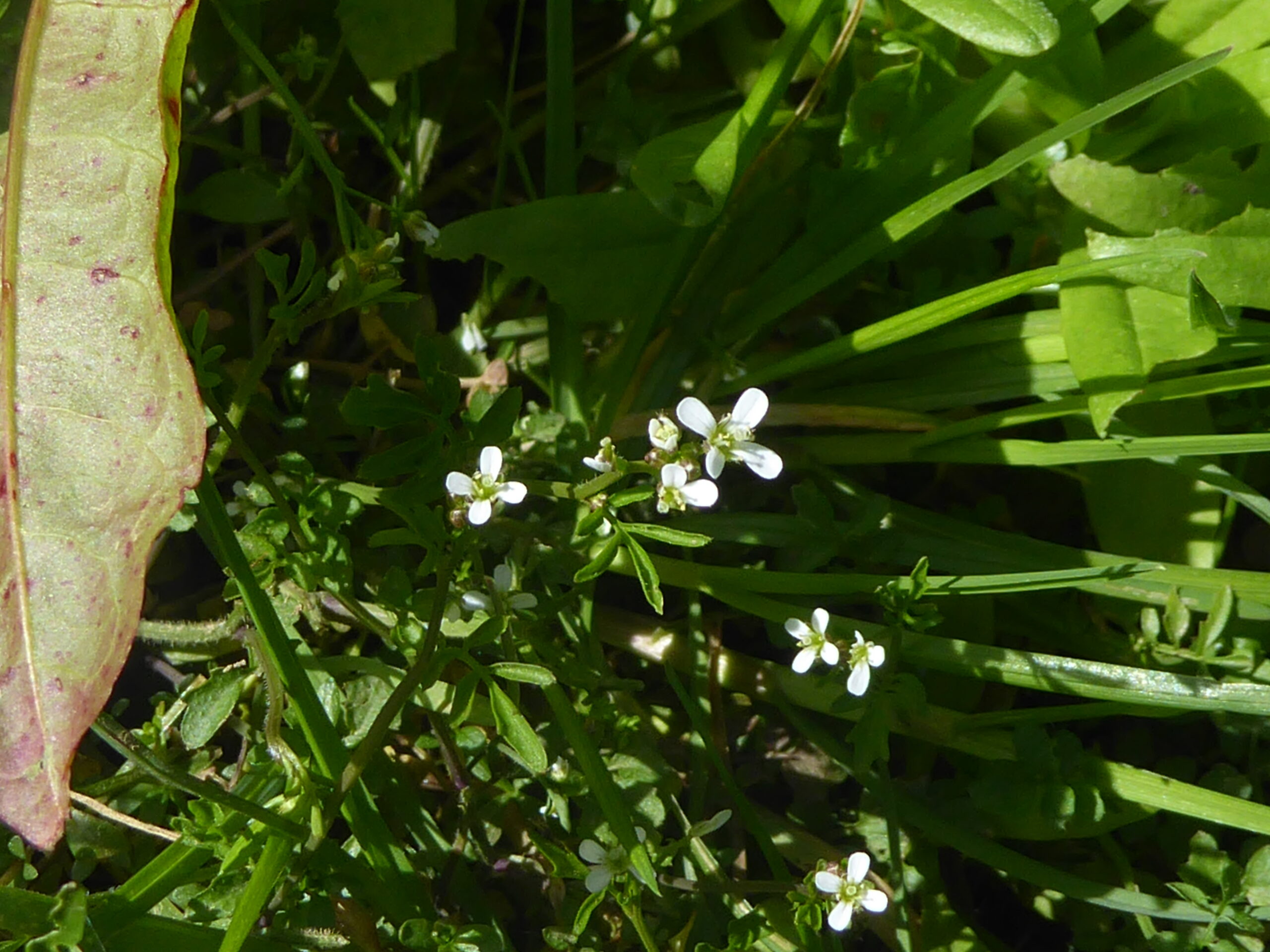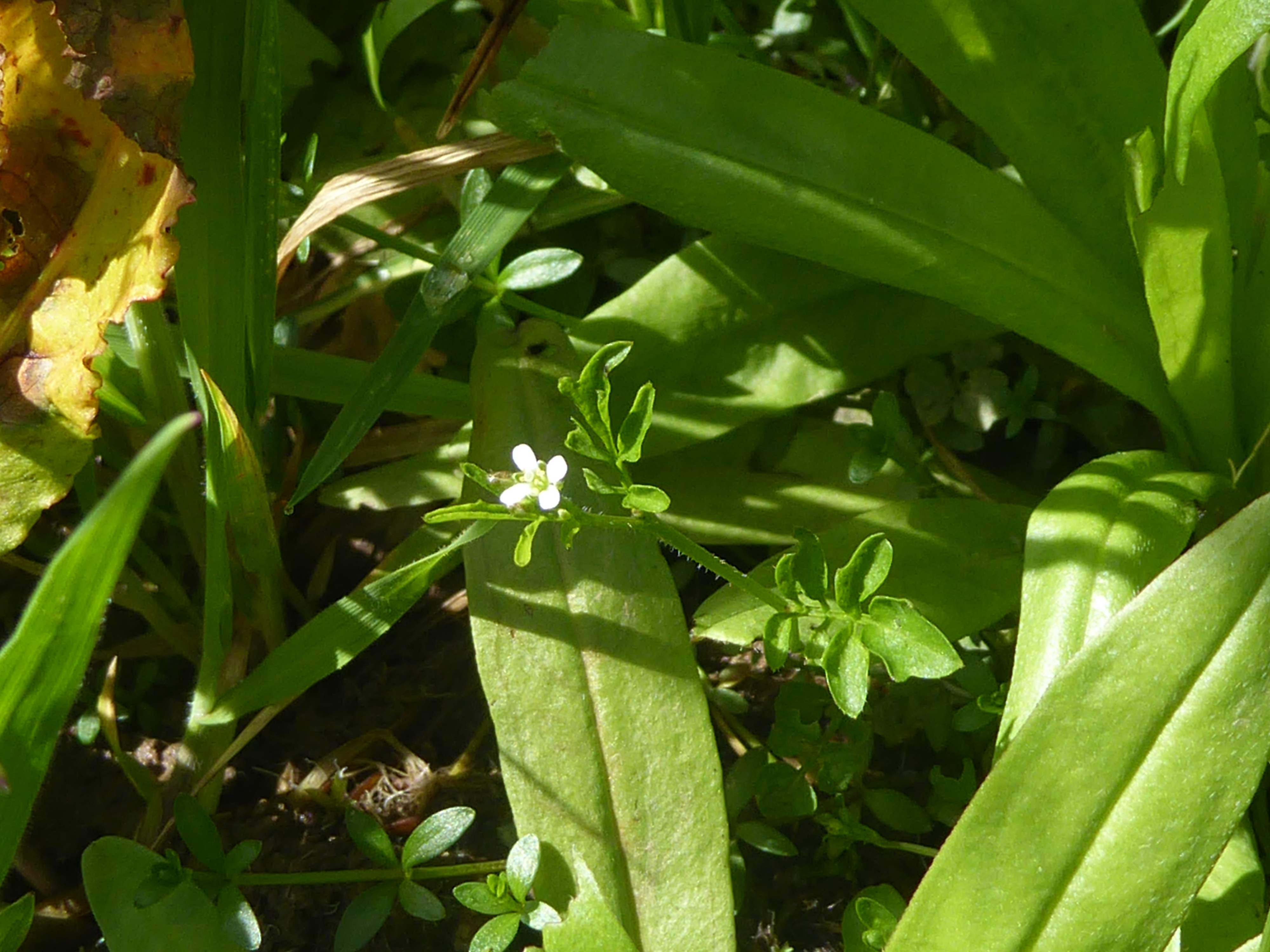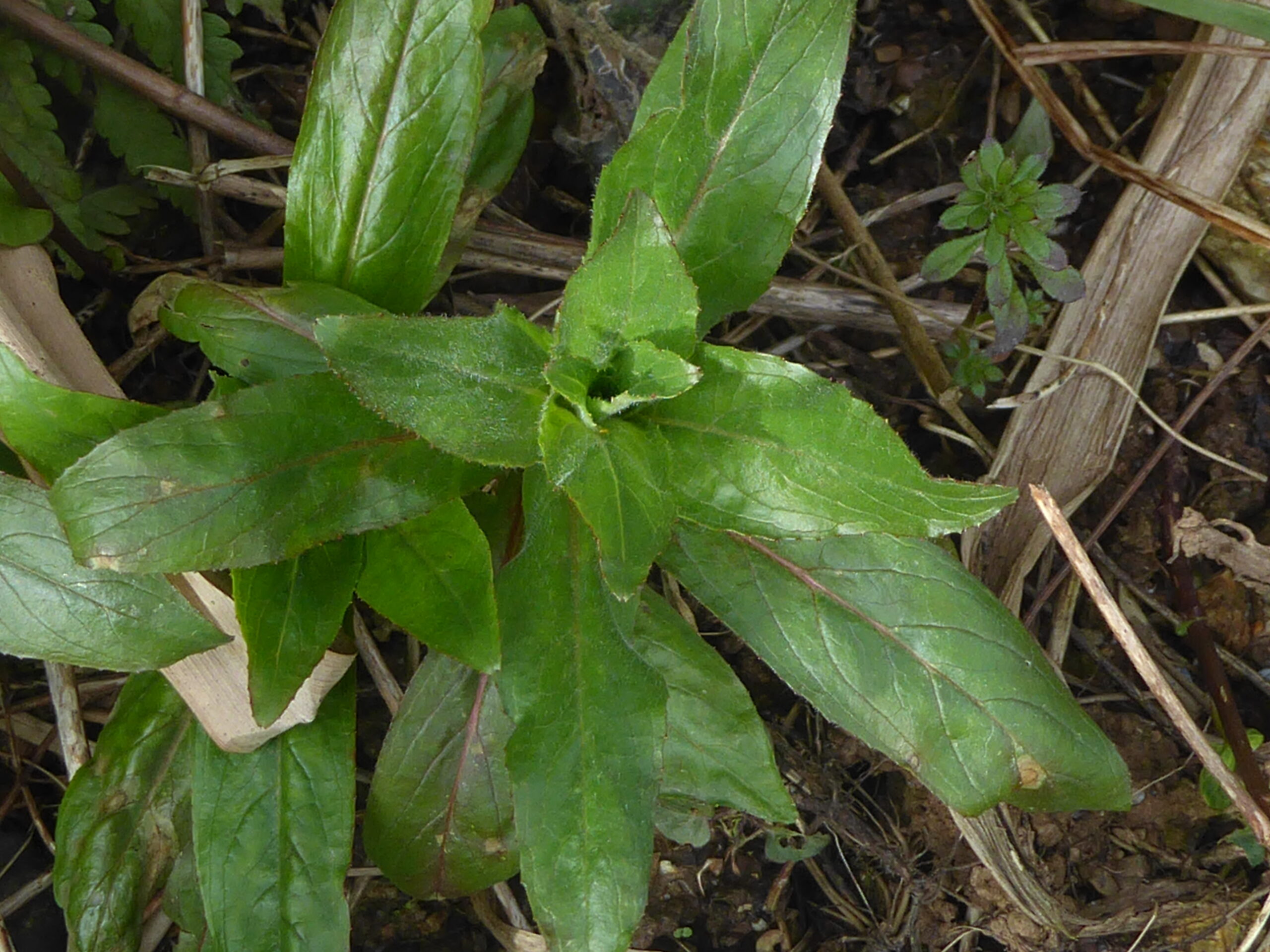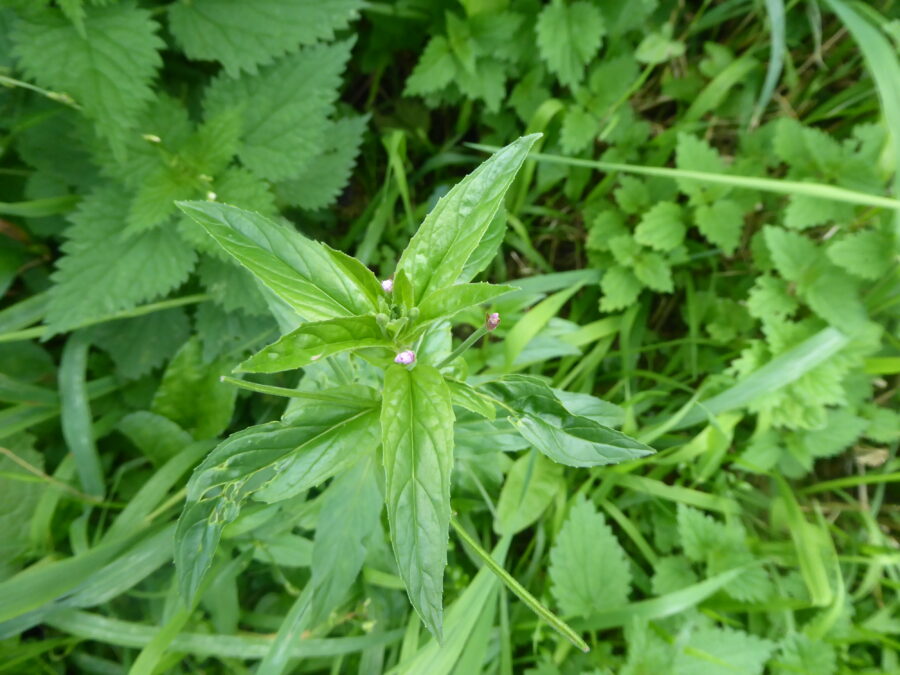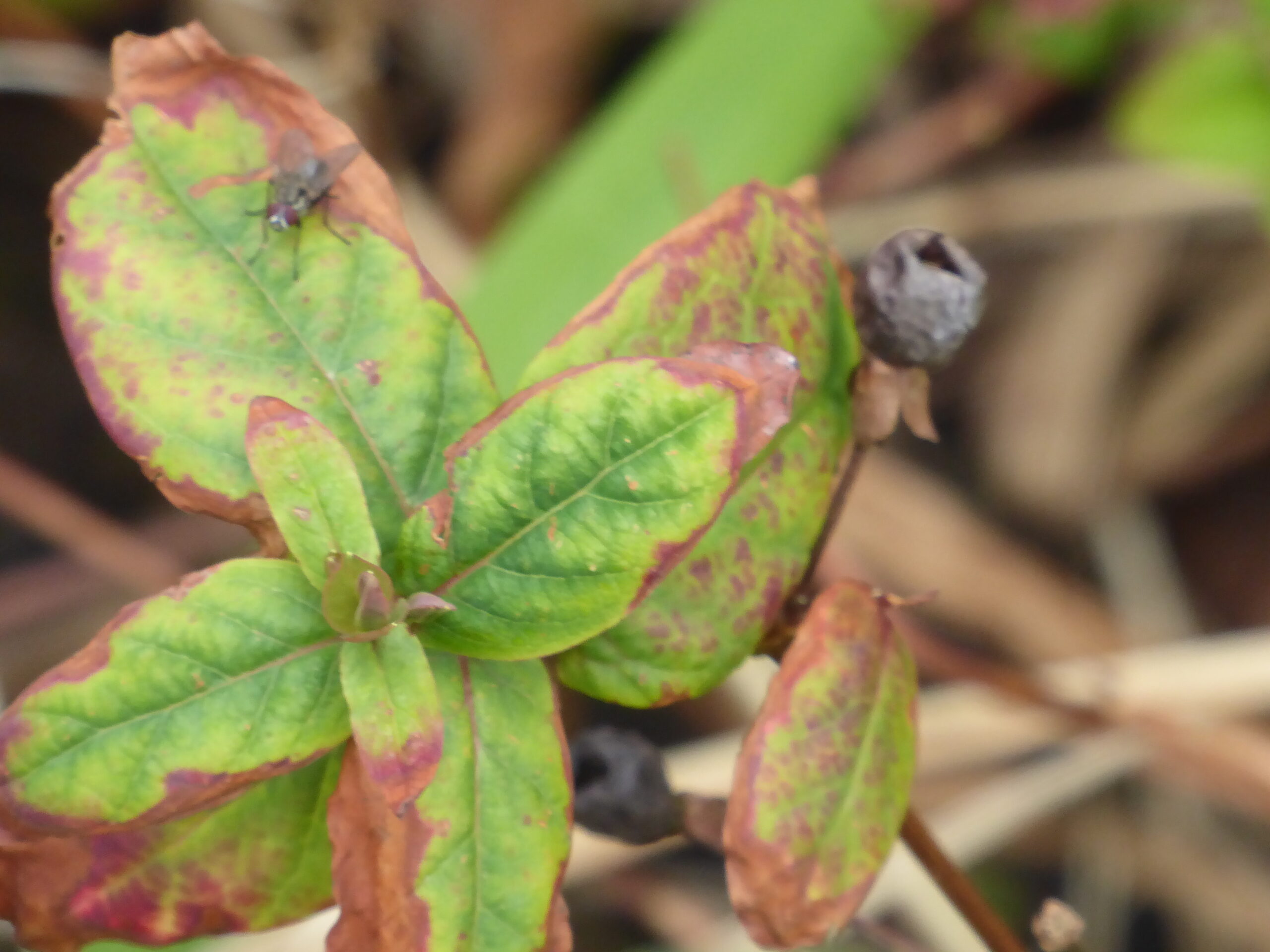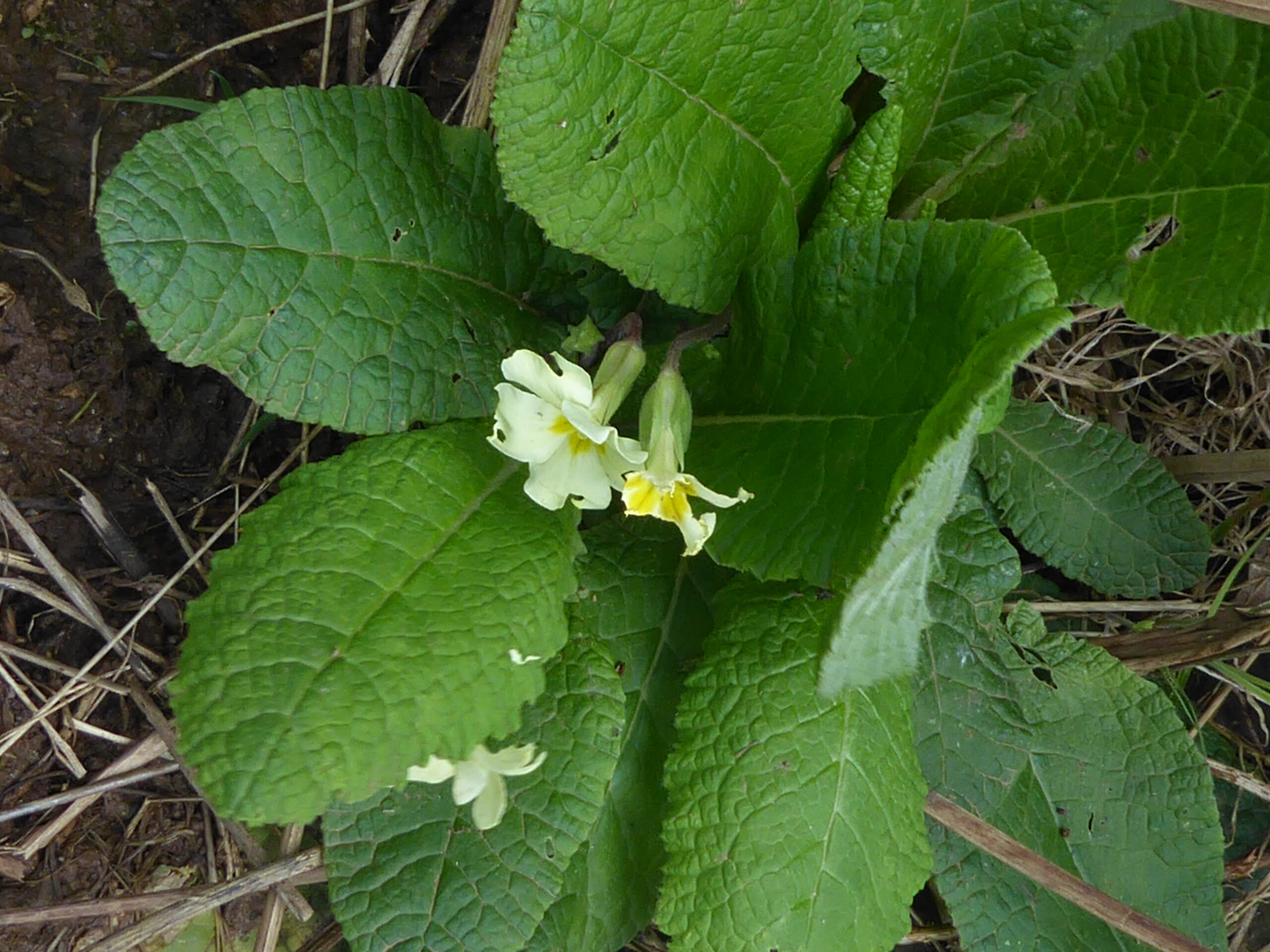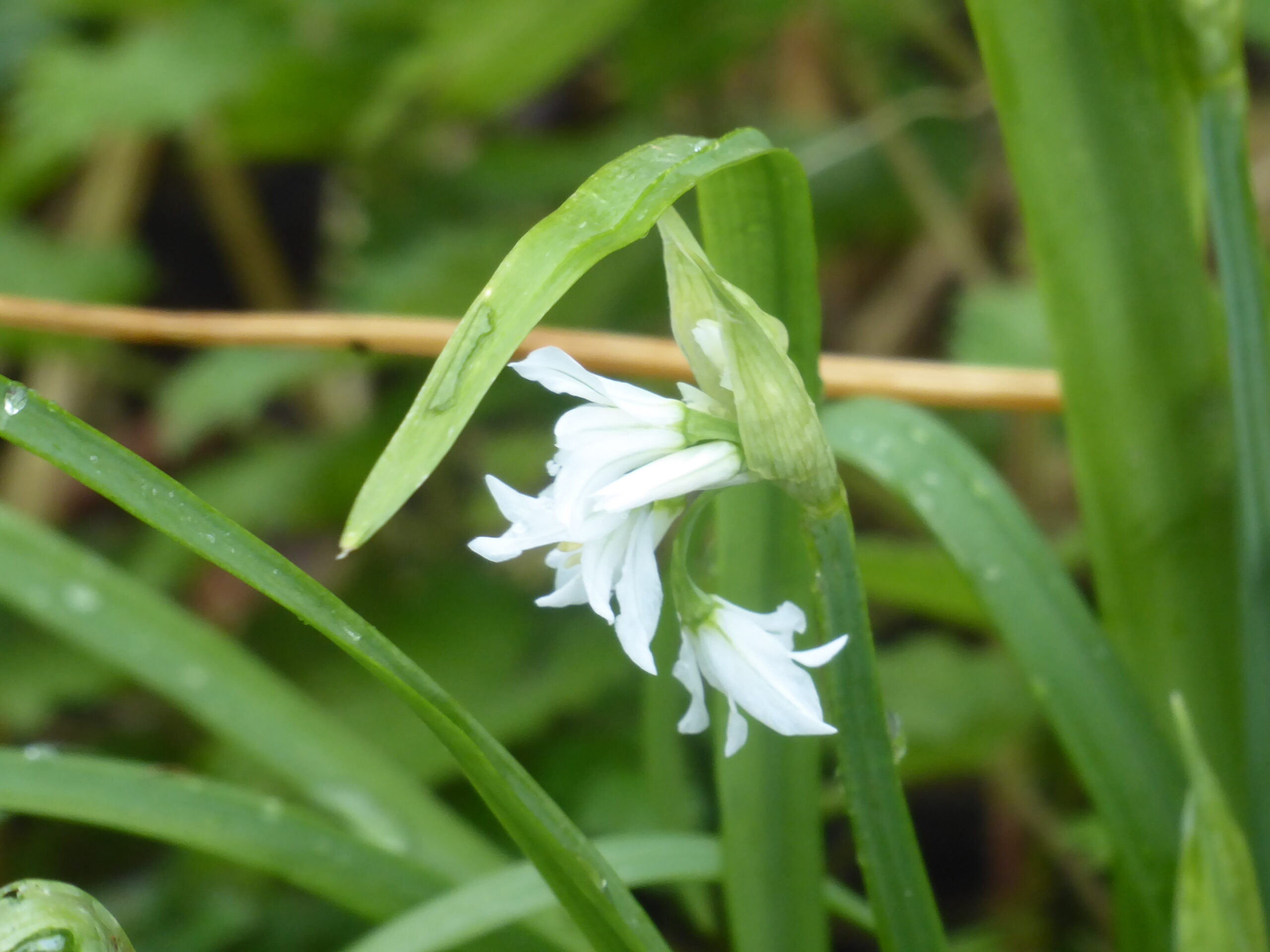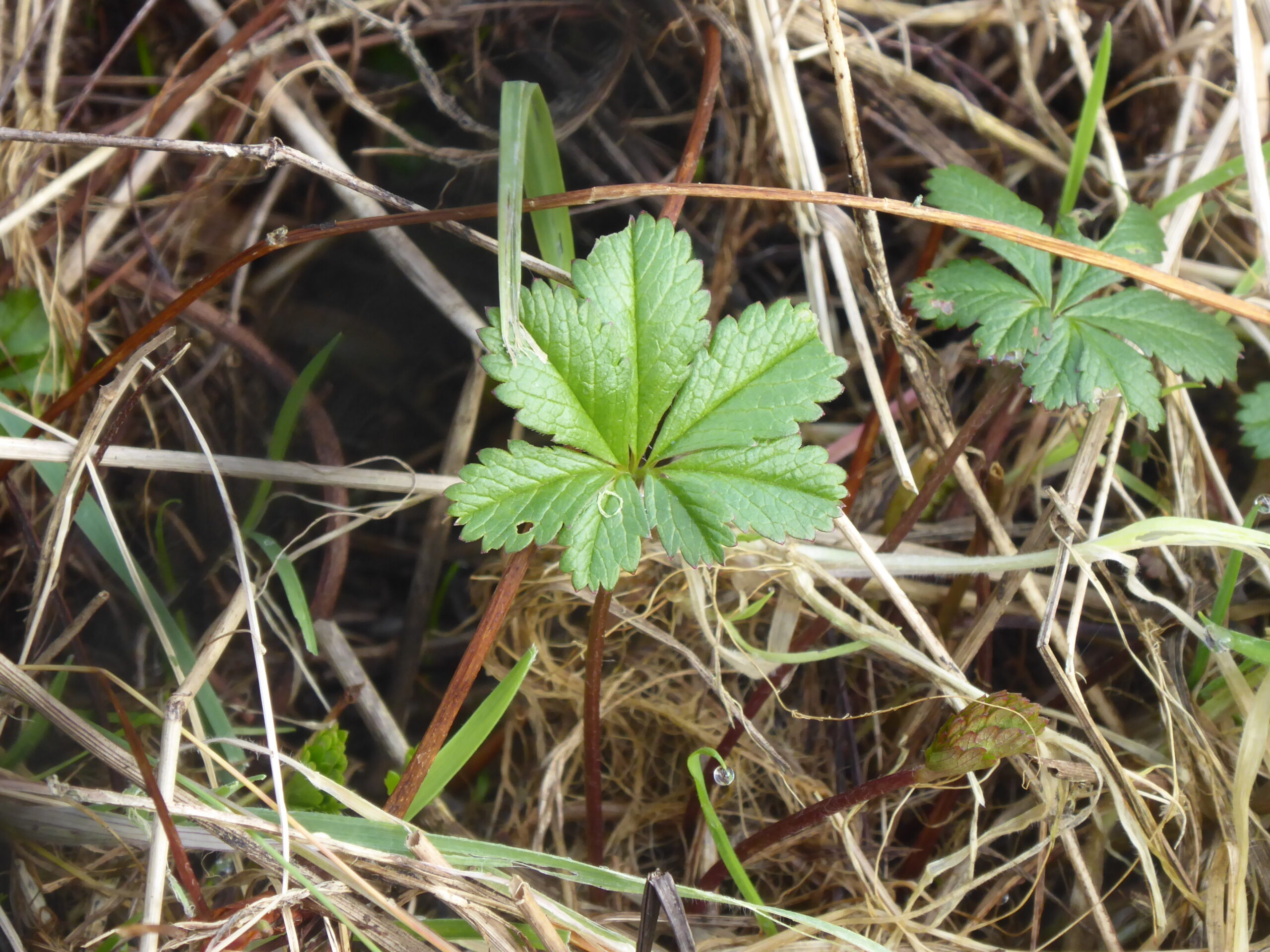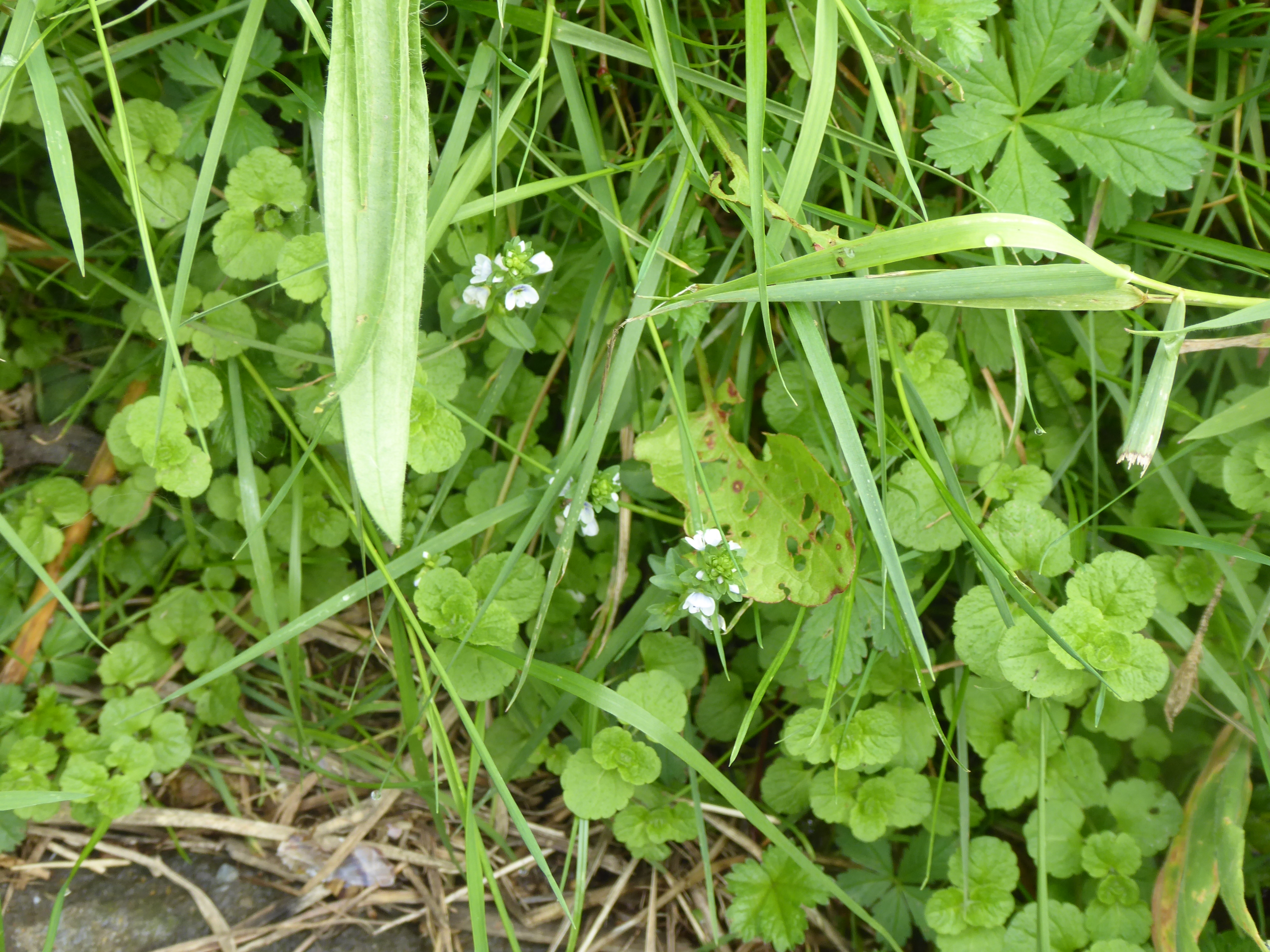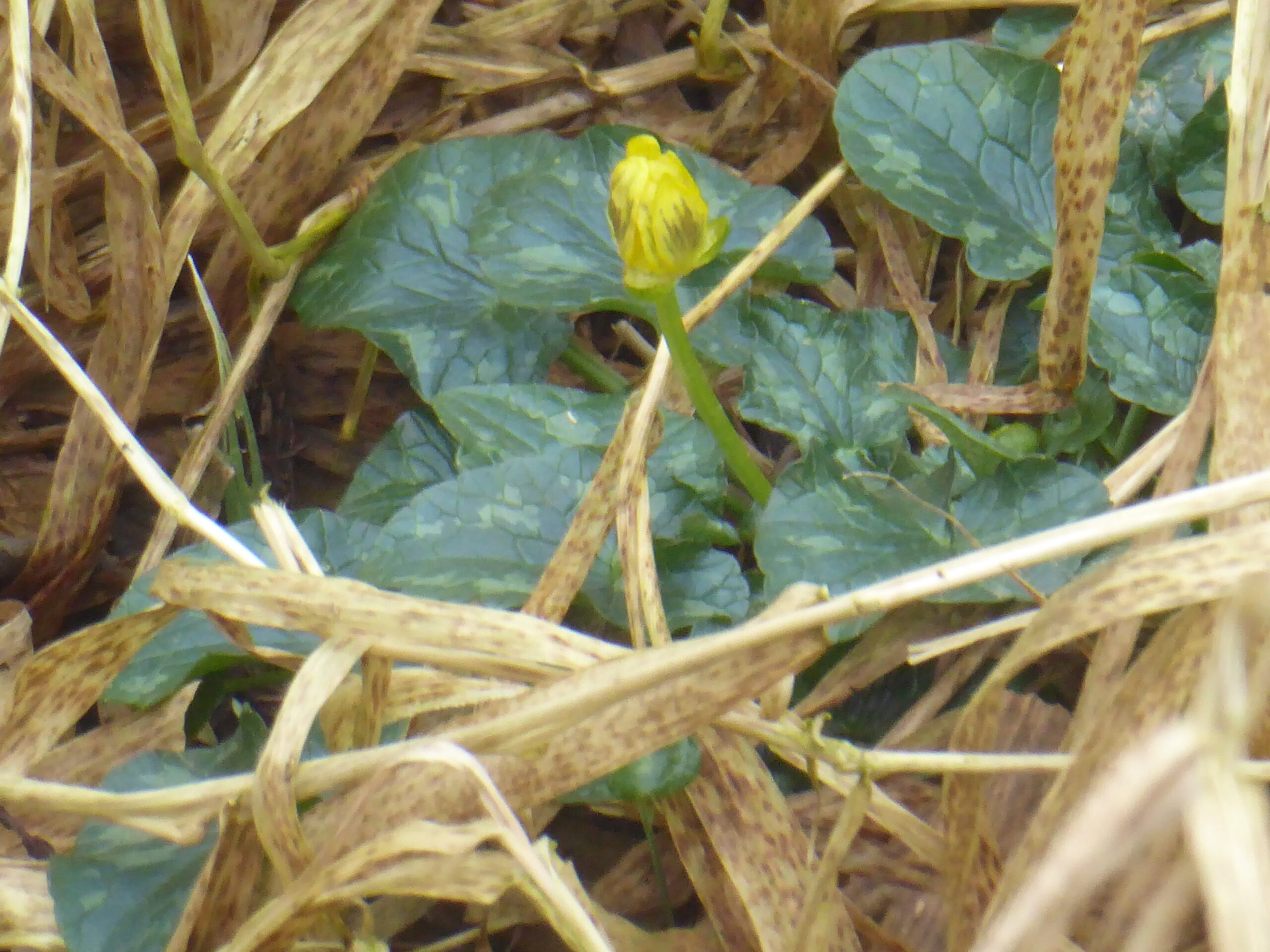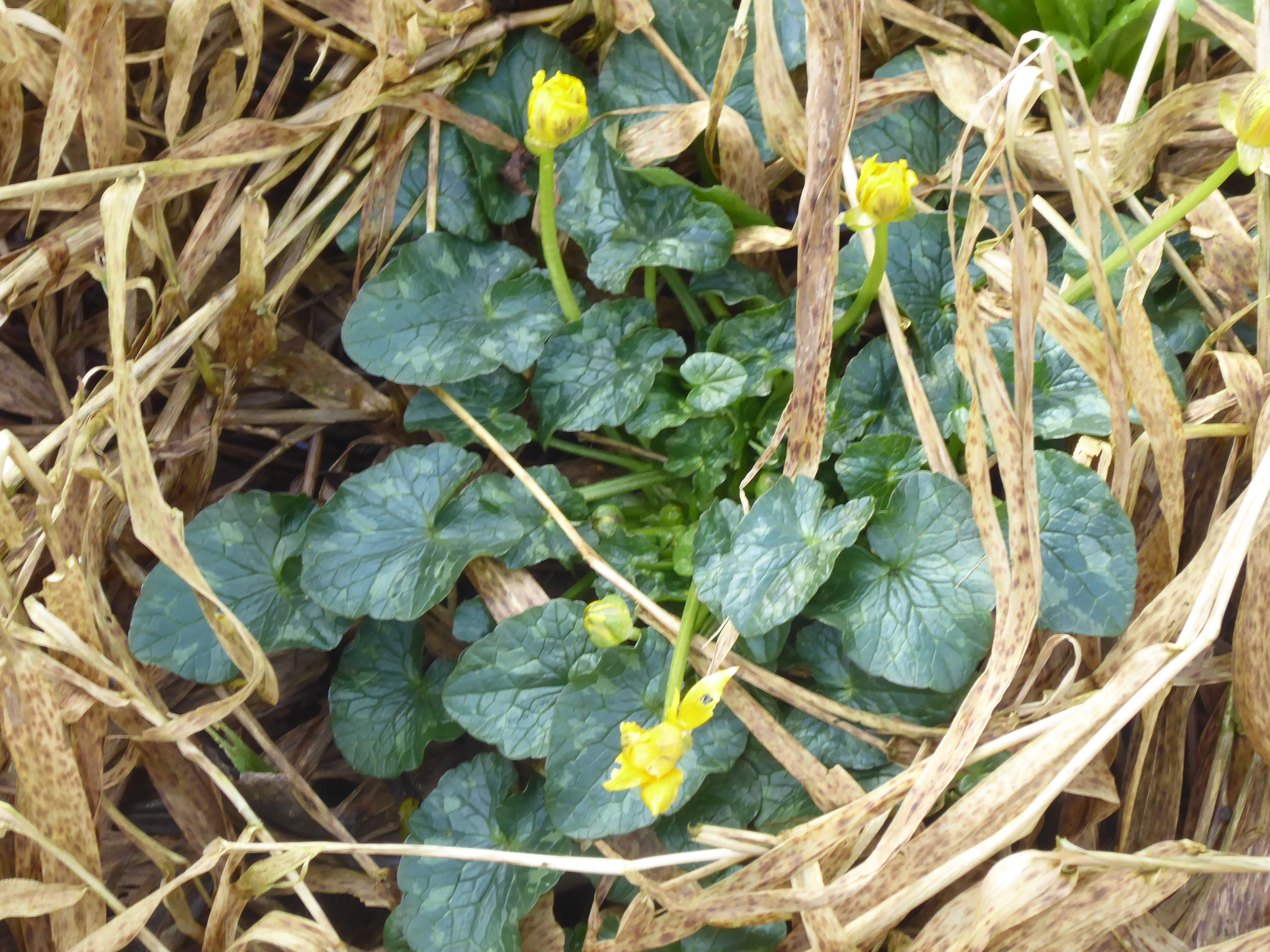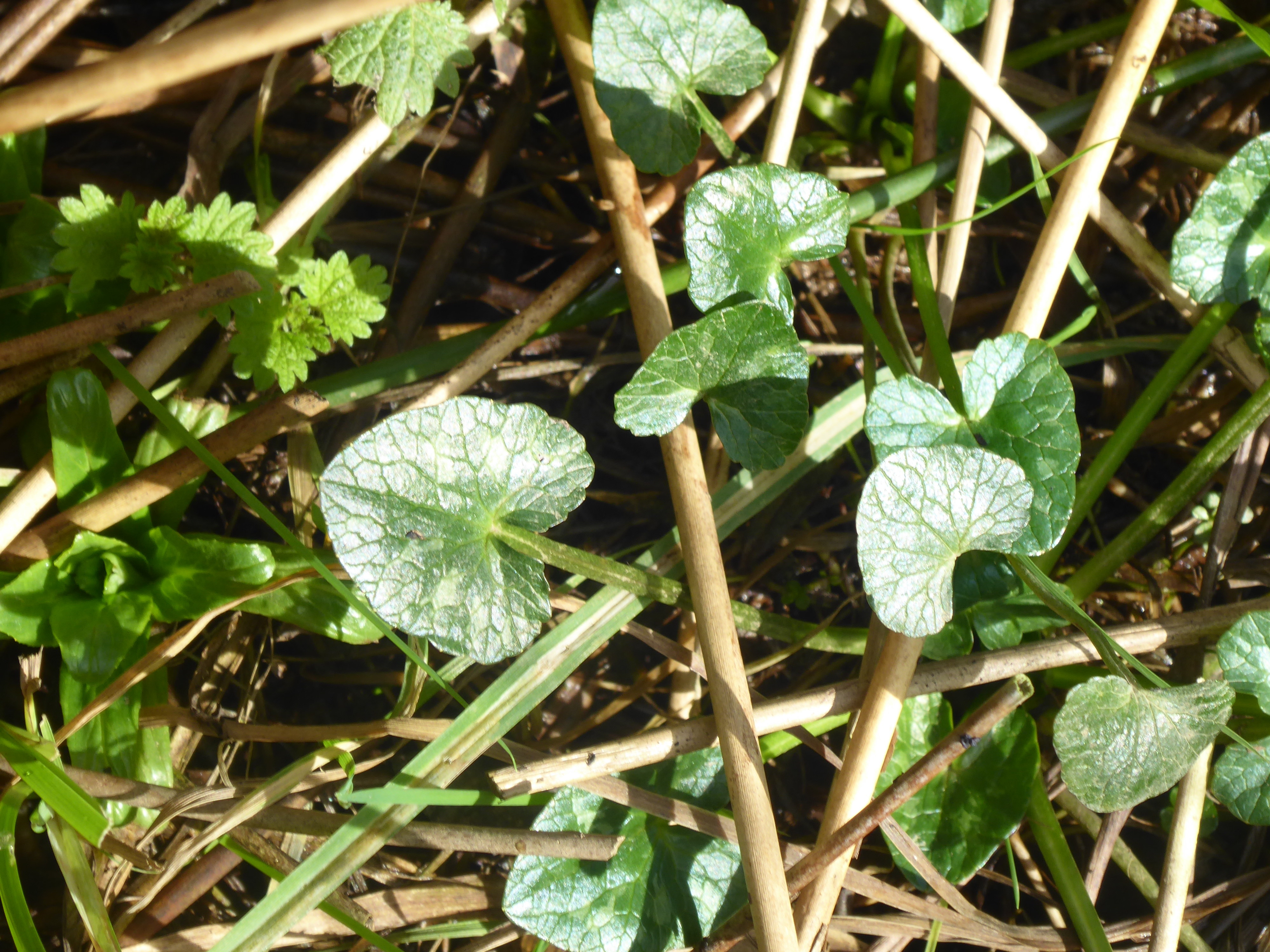Another dock-looking plant, the leaves are more scalloped and shaped, so I looked it up and found it was a figwort. With its square red stems, it has to be a Common Figwort. It is a perennial that likes a damp habitat, sunny or shady, woodland, ditch, or open riverside. The plant is used by herbalists to treat skin diseases, hence the Latin name which refers to the disease scrofula. The common name figwort also refers to the Roman slang for piles, for which it is also a remedy!
The leaves in the foreground of the picture are young teasels, which are invading some parts of the garden and fernery. Also some bedstraw/cleaver shoots.
